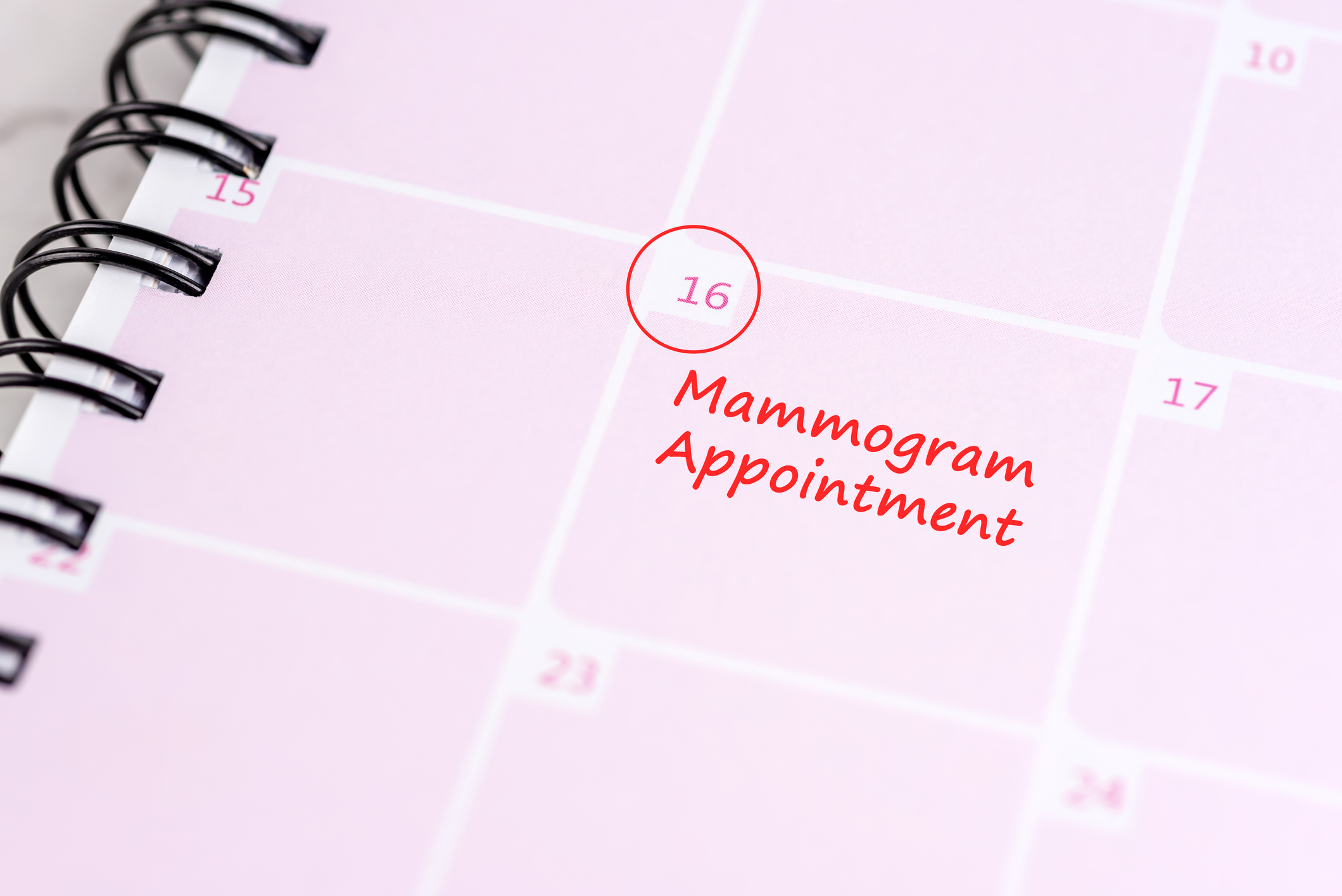
Your mammogram: How to prepare and what to expect
3 minutes
Mammography is a screening test that can help detect early signs of breast cancer before you even notice symptoms. During this low-dose x-ray, which takes about 20 minutes, a radiologic technician will position your breasts on a special machine and slowly compress your breast between two plates, which helps produce a high-quality image.
If you follow the American Cancer Society’s guidelines, you may choose to have yearly mammograms at age 40, but should start yearly mammograms no later than age 45. At age 55, you may continue having yearly exams or choose to have them every other year. If you’re at increased risk for breast cancer, your provider may recommend that you start being screened earlier and more often.
Preparing for this important breast test. To get a good picture of your breast health and help make the test more comfortable, it’s important to do your homework. These tips can help the mammogram process go smoothly.
Pay attention to timing. If you still get a period, try not to schedule your mammogram the week before or during your period. For menstruating women, that’s when breast tissue tends to be more sensitive.
Skip the deodorant. On the day of your mammogram, don’t use deodorant, antiperspirant, powders, lotions, creams, or perfume under your arms or breasts. These products may show up as white spots or shadows on the x-ray, which may lead to more testing.
Pick pants, shorts or a skirt. For the test, you’ll need to undress from the waist up. You’ll be given a wrap to wear. But if you wear a skirt or pants that day rather than a dress, you’ll only need to remove your top and bra.
Speak up. Tell the x-ray technologist if you have breast implants or have noticed any breast changes or problems. Let them know if you have any trouble standing or if you’re feeling dizzy or light-headed. And alert them if you’re breastfeeding or think you might be pregnant.
Know that breast compression is quick. Breast compression during a mammogram can be uncomfortable. But keep in mind that it only lasts about 10 to 15 seconds per image. If it hurts, the technologist can try to adjust the compression.
Overall, you can generally expect to get the results of your mammogram within a few weeks. If there is a health concern, you will hear from the facility earlier.
Sources: American Cancer Society; Centers for Disease Control and Prevention; National Institutes of Health; U.S. Department of Health & Human Services


